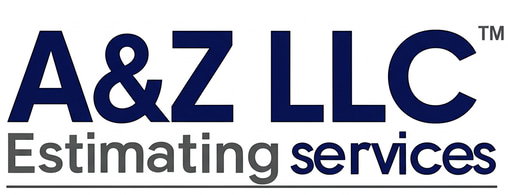Profit Margins for Flooring Contractors
Abdul Rehman
3 min read


Introduction
The U.S. construction industry is characterized by large‐scale projects that operate on notoriously thin profit margins. Specialty subcontractors—particularly flooring contractors serving residential, commercial, and industrial markets—feel this pressure acutely. From 2020 to 2025, factors such as rising labor costs, material price volatility, subcontracting risk allocation, intense competition, and evolving regulatory landscapes have all conspired to squeeze their already slim margins.
Profit Margin Landscape in Construction
Across the broader construction sector, companies aim for gross profit margins of roughly 25–35%, yet net margins typically range from 2% to 10% once overhead and financing costs are accounted for. With such slender buffers, even minor cost overruns or delays can turn profitable projects into break-even or losses.
Profit Margins for Flooring Contractors
Flooring subcontractors often achieve higher gross margins—averaging about 38–45%—by marking up both materials and labor. However, after absorbing overhead (office costs, insurance, equipment) and financing expenses, many see operating margins (EBITDA) closer to 20% and net profit margins in practice of 5–15%. In the commercial segment—where formal bidding and low‐bid procurement dominate—contractors typically aim for 12–18% margins but often settle at the low end of that range.
Market Segments: Residential, Commercial, and Industrial
Residential: Jobs range from new‐build installations to homeowner remodels. Net margins here can be slightly higher (7–15%), but softening demand and rising interest rates have recently depressed revenue.
Commercial: Flooring contractors bid on projects for general contractors, such as offices and hospitals. Margins in this sector hover in the low single digits to mid‐teens, with payment delays of 60–90 days standard under “pay‐when‐paid” terms.
Industrial: Specialized installations (e.g., epoxy coatings in warehouses) can command premiums; however, competitive bidding, high bonding and insurance costs, and regulatory compliance (e.g., silica dust rules) limit margins similarly to those in the commercial market.
Key Factors Driving Thin Margins
Labor Costs & Skilled Labor Shortages
Wages have risen sharply—up nearly 8% between late 2019 and 2021—driven by fierce competition for qualified installers. Over 90% of construction firms report difficulty filling positions, forcing many to offer higher pay and bonuses that directly erode profit margins.Material Price Volatility & Supply Chain Disruptions
Construction material prices increased by more than 20% year-over-year in 2021, driven by global shortages and shipping bottlenecks. Contractors on fixed-price jobs found their margins evaporating when costs soared after bids were submitted.Subcontracting Practices & Payment Terms
Flooring installers typically work under competitive, lump-sum bids and “pay-when-paid” clauses. Average days sales outstanding in construction often exceed 60 days, creating cash-flow challenges and financing costs that further compress profits.Market Competition & Pricing Pressures
With more than 120,000 flooring installation businesses nationwide—many of which are small, owner-operated—competition is fierce. Price undercutting is common, driving margins toward the minimal levels necessary to stay in business.Inflation, Economic Cycles & Regulatory Costs
General inflation peaked above 8% in mid-2022, driving up every input cost, from fuel to insurance. New regulations—from import restrictions under the Uyghur Forced Labor Prevention Act to stricter silica dust controls—have increased compliance expenses without corresponding increases in contract prices.
Recent Trends (2020–2023)
2020 (Pandemic Onset): Short shutdowns were followed by a remodeling boom. Early supply-chain breakdowns and increased safety costs emerged, but low interest rates and stimulus measures sustained activity.
2021 (Boom & Shortages): Record demand collided with material and labor shortages, squeezing margins despite high revenues.
2022 (Hyperinflation & Rising Rates): Construction input costs hit historic highs. Fixed-price contracts became unprofitable for many, and interest-rate hikes cooled the market, further compressing margins.
2023 (Stabilizing Costs & Slowing Demand): Material prices eased, but a 10% drop in industry revenue intensified price competition. Contractors who had survived the previous year’s cost surges saw only marginal relief, as lower volumes kept margins tight.
Flooring contractors epitomize the “high volume, low margin” nature of the construction industry. Despite gross margins that can initially appear robust, net profits often settle in the mid-single digits. Success depends on vigilant cost control, efficient cash-flow management, and strategic differentiation—whether through specialized services, tighter supplier contracts, or smarter contract terms. In an industry where a few percentage points separate profit from loss, those firms that master these levers will stand on firmer financial ground.
